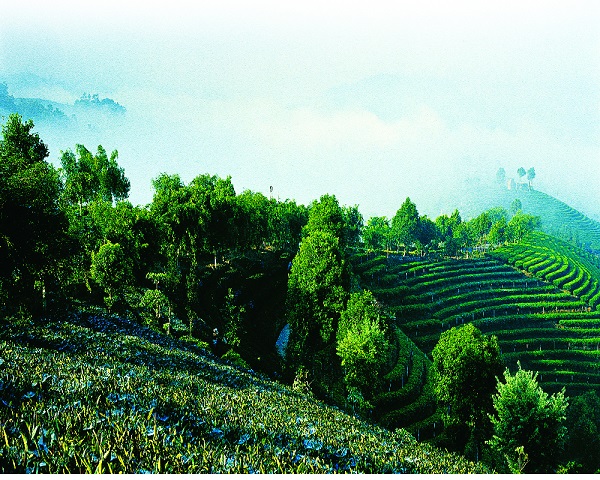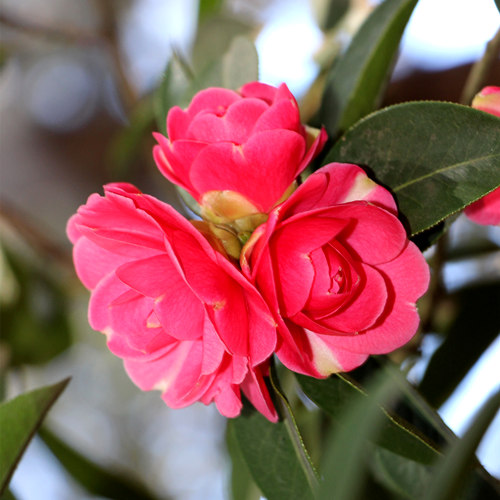
Inclusive Coexistence of Diverse Beauty in Yunnan
Yunnan Province, located in the southwestern part of China, is a unique region where diverse natural landscapes, rich cultural heritage, and a multitude of ethnic groups coexist harmoniously. This inclusive coexistence of diverse beauty is one of Yunnan's most distinctive characteristics. Here is a detailed introduction to this fascinating aspect of Yunnan:
Geographic Diversity
Yunnan's geography is incredibly varied, featuring majestic mountains, picturesque plateaus, lush valleys, and serene lakes. This diversity creates a stunning array of natural beauty.
Mountains and Plateaus
Hengduan Mountains: These towering mountains are home to some of China's most dramatic scenery, including the Meili Snow Mountain and Jade Dragon Snow Mountain, both revered for their breathtaking views and biodiversity.
Yunnan-Guizhou Plateau: This region is characterized by its karst landscapes, featuring unique rock formations and terraced fields like those in the Stone Forest and Yuanyang Rice Terraces.
Valleys and Rivers
Tiger Leaping Gorge: One of the world's deepest gorges, offering spectacular views and challenging hikes.
Nujiang Valley: Known for its wild beauty and rich biodiversity, home to many rare plant and animal species.
Lakes and Wetlands
Er’hai Lake: A stunning highland lake near Dali, surrounded by picturesque villages and lush scenery.
Pudacuo National Park: Includes Shudu and Bita lakes, offering pristine natural beauty and diverse ecosystems.
Biodiversity
Yunnan's varied climates and altitudes contribute to its status as one of China's most biodiverse provinces.
Flora and Fauna
Xishuangbanna: This tropical rainforest region is home to many rare species, including the Asian elephant and a wide variety of exotic plants.
Gaoligongshan National Nature Reserve: A biodiversity hotspot with numerous endemic species and rich plant and animal life.
Ethnic Diversity
Yunnan is the most ethnically diverse province in China, with 25 officially recognized ethnic groups. This diversity is a cornerstone of Yunnan's inclusive coexistence.
Major Ethnic Groups
Naxi: Known for their ancient Dongba script and rich musical heritage, particularly in Lijiang.
Yi: Celebrated for their vibrant festivals and distinctive traditional clothing.
Bai: Famous for their traditional Bai architecture and cultural festivals in Dali.
Hani: Renowned for creating the Yuanyang Rice Terraces.
Dai: Inhabiting the tropical Xishuangbanna region, known for their Water Splashing Festival.
Cultural Practices and Festivals
The cultural practices and festivals of Yunnan’s ethnic groups highlight the region’s inclusive coexistence.
Torch Festival (Yi): A major festival involving torch lighting, dancing, and wrestling.
Water Splashing Festival (Dai): Celebrated during the Dai New Year, where water is splashed on each other to wash away bad luck.
March Fair (Bai): An important trade fair in Dali that also includes traditional performances and cultural displays.
Sanduo Festival (Naxi): Held in Lijiang, honoring the Naxi deity Sanduo with music, dance, and rituals.
Harmony and Coexistence
Yunnan's ethnic groups have coexisted harmoniously for centuries, contributing to a rich tapestry of cultural exchange and mutual respect.
Language
Multilingualism: Many people in Yunnan are multilingual, speaking their folk languages as well as Mandarin.
Traditional Crafts and Arts
Handicrafts: Yunnan’s ethnic groups are known for their exquisite handicrafts, such as Yi embroidery, Bai tie-dye, and Naxi pictographic writing.
Music and Dance: Traditional music and dance play a crucial role in the cultural life of Yunnan’s ethnic groups, with each group having its distinctive styles and instruments.
Sustainable Development and Preservation
Yunnan's commitment to sustainable development ensures that its diverse beauty is preserved for future generations.
Eco-tourism
Yunnan promotes eco-tourism that emphasizes the preservation of its natural and cultural heritage. Eco-tourism initiatives involve local communities in tourism management and ensure that tourism benefits are shared equitably.
Conservation Efforts
Protected Areas: Yunnan has established numerous nature reserves and national parks to protect its unique ecosystems and biodiversity.
Green Development: The province invests in renewable energy, sustainable agriculture, and pollution control to maintain its environmental health.
Conclusion
The inclusive coexistence of diverse beauty in Yunnan is a testament to the province's harmonious integration of its rich natural landscapes, cultural heritage, and ethnic diversity. This unique blend makes Yunnan a fascinating and enriching destination for visitors and a model of su



